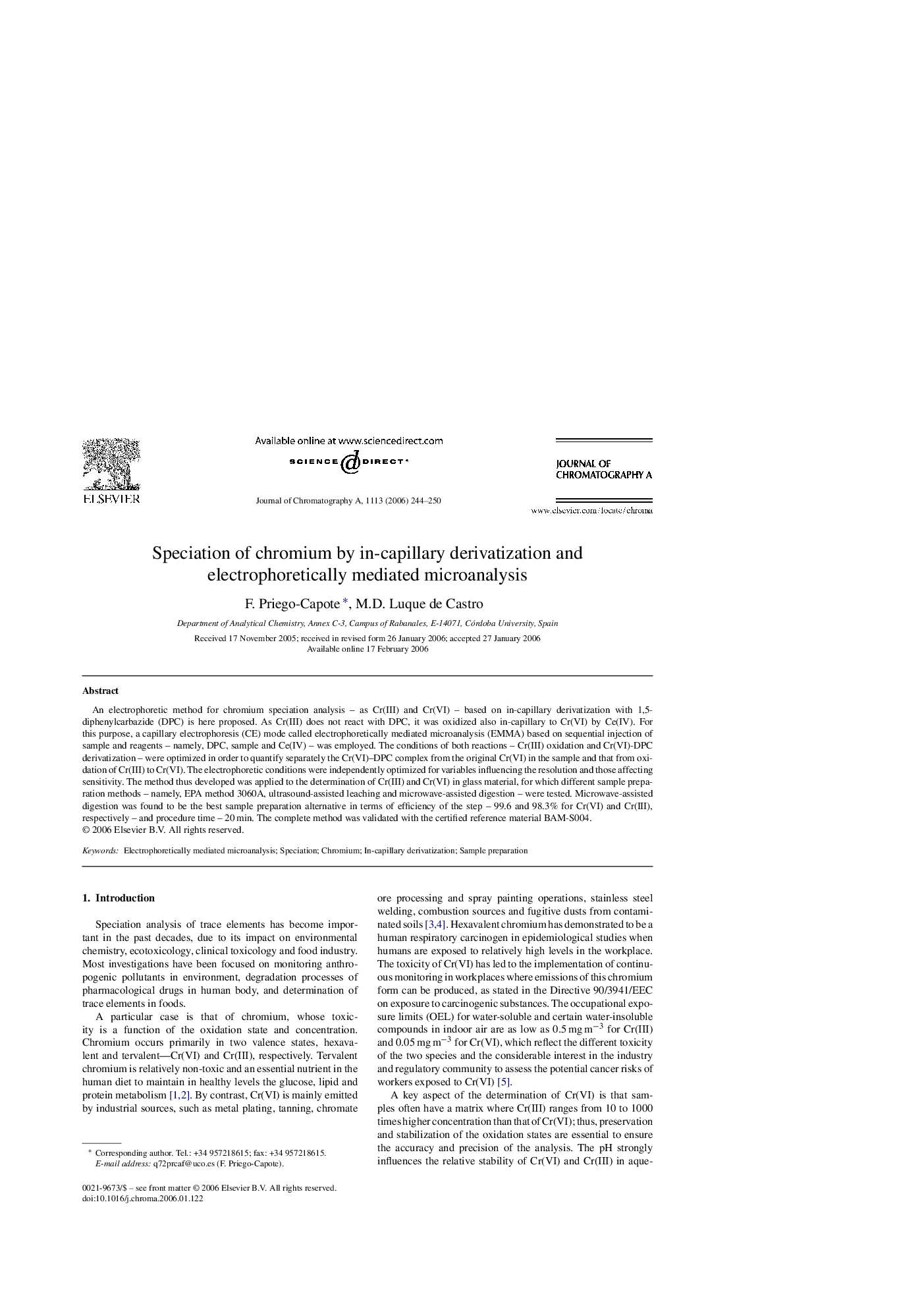| Article ID | Journal | Published Year | Pages | File Type |
|---|---|---|---|---|
| 1211572 | Journal of Chromatography A | 2006 | 7 Pages |
An electrophoretic method for chromium speciation analysis – as Cr(III) and Cr(VI) – based on in-capillary derivatization with 1,5-diphenylcarbazide (DPC) is here proposed. As Cr(III) does not react with DPC, it was oxidized also in-capillary to Cr(VI) by Ce(IV). For this purpose, a capillary electrophoresis (CE) mode called electrophoretically mediated microanalysis (EMMA) based on sequential injection of sample and reagents – namely, DPC, sample and Ce(IV) – was employed. The conditions of both reactions – Cr(III) oxidation and Cr(VI)-DPC derivatization – were optimized in order to quantify separately the Cr(VI)–DPC complex from the original Cr(VI) in the sample and that from oxidation of Cr(III) to Cr(VI). The electrophoretic conditions were independently optimized for variables influencing the resolution and those affecting sensitivity. The method thus developed was applied to the determination of Cr(III) and Cr(VI) in glass material, for which different sample preparation methods – namely, EPA method 3060A, ultrasound-assisted leaching and microwave-assisted digestion – were tested. Microwave-assisted digestion was found to be the best sample preparation alternative in terms of efficiency of the step – 99.6 and 98.3% for Cr(VI) and Cr(III), respectively – and procedure time – 20 min. The complete method was validated with the certified reference material BAM-S004.
